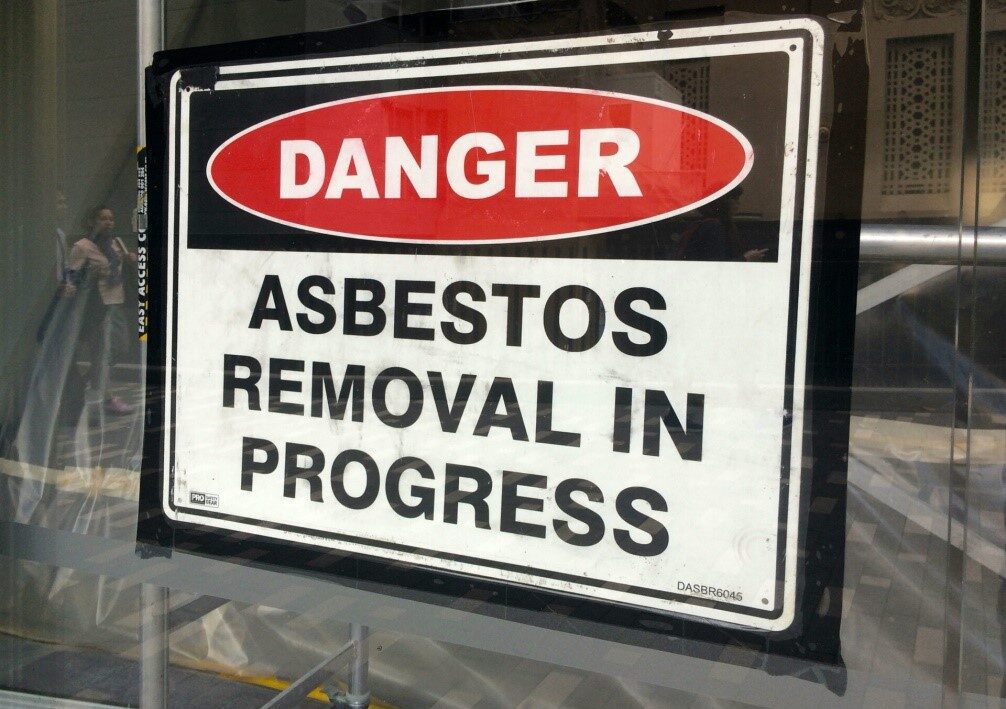Asbestos Abatement Greenwich, CT – Asbestos Removal Greenwich, CT
Many buildings and homes in Greenwich, CT still contain asbestos, which has long been known to cause cancer. Asbestos can be found in pipe and boiler insulation, attic insulation called vermiculite, floor tiles, roof shingles, exterior siding shingles and other applications.
Asbestos abatement (removal) refers to the process of safely removing or minimizing the presence of asbestos-containing materials (ACMs) in buildings or structures. Asbestos was widely used in construction materials for its durability, heat resistance, and insulating properties, but it was later found to be hazardous to health, causing serious illnesses such as asbestosis, lung cancer, and mesothelioma when its fibers are inhaled.
Certified Inspections, Inc. can provide you with a qualified asbestos abatement contractor. We can be reached at www.certifiedinspections.com
Asbestos Abatement Greenwich, CT – Asbestos Removal Greenwich, CT
Many buildings and homes in Greenwich, CT still contain asbestos, which has long been known to cause cancer. Asbestos can be found in pipe and boiler insulation, attic insulation called vermiculite, floor tiles, roof shingles, exterior siding shingles and other applications.
Our asbestos removal company in Greenwich, CT, provides thorough asbestos removal solutions focusing on safety measures and a highly skilled professional team. Safety is our top priority, and we strictly adhere to industry regulations and guidelines to guarantee the safe removal of asbestos-containing materials.
Our professional Greenwich asbestos removal team is trained in handling asbestos removal projects efficiently and effectively, utilizing the latest techniques and equipment to minimize risks associated with asbestos exposure. With our expertise and commitment to safety, you can rely on us to deliver trustworthy asbestos removal services that meet your needs and surpass your expectations.
Key Steps in Asbestos Abatement Greenwich, CT:
A certified asbestos inspector assesses the building to identify the presence and extent of asbestos-containing materials. Asbestos can be friable, meaning that it can become airborne and get into one’s lungs or non-friable meaning it is hard and doesn’t impose as much of a risk. Non-friable asbestos includes tile, siding and shingles. Friable asbestos includes most insulation and some wallboard.
2. Planning:
A detailed abatement plan is developed, including the methods to be used, safety precautions, and disposal procedures. This plan must comply with local, state, and federal regulations. Sometimes asbestos does not have to removed but can be safely encapsulated in wood, sheetrock, or other hard substances. The inspector shall determine the best and most cost-effective plan.
3. Containment:
The work area is sealed off to prevent asbestos fibers from contaminating other areas. This may involve using plastic sheeting, negative air pressure units, and decontamination chambers.
4. Removal or Encapsulation:
Removal:
The asbestos-containing materials are carefully removed, often while wet to prevent fibers from becoming airborne. Workers use specialized tools and wear protective equipment.
Encapsulation:
In some cases, the asbestos is not removed but instead sealed with a coating that prevents fibers from being released.


The work area is thoroughly cleaned using HEPA vacuums and wet wiping techniques. All asbestos waste is properly bagged, labeled, and transported to a designated disposal site.
6. Air Monitoring and Clearance Testing:
Air samples are taken before, during, and after abatement to ensure that asbestos fiber levels are within safe limits. Clearance testing confirms that the area is safe for re-occupancy.
7. Disposal:
Asbestos waste is disposed of in accordance with environmental regulations, typically at a licensed hazardous waste facility.
Regulations and Safety:
Asbestos abatement must be performed by licensed professionals following strict regulations set by agencies such as the Environmental Protection Agency (EPA) in the United States, the Health and Safety Executive (HSE) in the UK, or similar bodies in other countries. These regulations are designed to protect workers, building occupants, and the environment from asbestos exposure.
Asbestos abatement is a critical process in ensuring the safety of buildings, particularly in older structures where asbestos was commonly used.
Trusted Clients:











Real Customers. Really Great Reviews.


Great Advice!
“I had an unknown plumbing issue in my office that was going on for quite some time and caused some water damage on my flooring. Once I realized what was happening, I panicked thinking my office was covered in mold! I had no experience with these issues, and immediately found Certified Inspections on google and gave them a call. Mark was AMAZING! He is so knowledgable and gave me great advice right away! He even answered my questions about my insurance and what could possibly be covered with my policy! So thankful!”
Jenna V. | Rockland County, NY

Saved Us Thousands!
“When we were selling our house, the buyer’s home inspector told us we had a bad mold problem in the attic, but he never did any testing. We called Certified Inspections and they took several samples and found that the black stuff on the wood wasn’t even mold. They saved us thousands of dollars in cleaning costs and the deal went through. Thank you to Mark and Certified Inspections!!”
Daniel & Ellie R. | Greenwich, CT

Mark is Amazing!
“Mark answers the calls and is so easy to reach. He was so informative, it was amazing. After having 2 mold tests done with different companies, we contacted Certified Inspections for an objective third party opinion Mark stayed on the phone with us for more than 30 minutes thoroughly going over everything and explaining what we should be concerned about. Thank you so much for being so helpful and kind during this time, and resolving our problem once and for all!”
Jeff L. | Westchester County, NY

Highly Recommend!
“When we thought we had mold because our kids were getting sick all the time, we called Certified Inspections. Mark inspected our house from top to bottom and took a lot of time to explain everything to us in detail, including the fact that testing is required before remediation can be done, so that there is no conflict of interest, and so unnecessary work wouldn’t get done, or get done the wrong way. I greatly admire his kindness, honesty, and integrity. After he finished, we were confident we would never have another mold problem again. I highly recommend working with this company if you want the job done right by someone you can trust.”
Ted K. | Manhattan, NY

Huge Help!
“I was worried that my recent health issues were caused by mold so I called the folks at Certified Inspections who were recommended to me by my friend. They spent a long time on the phone with me asking me about my symptoms and various things about my house and workplace, and concluded that mold could not be a cause of my illness. They directed me to the proper specialist who diagnosed and treated me. I feel much better now and Certified never even charged me for the invaluable consultation!”
Karen S. | Chappaqua, NY
